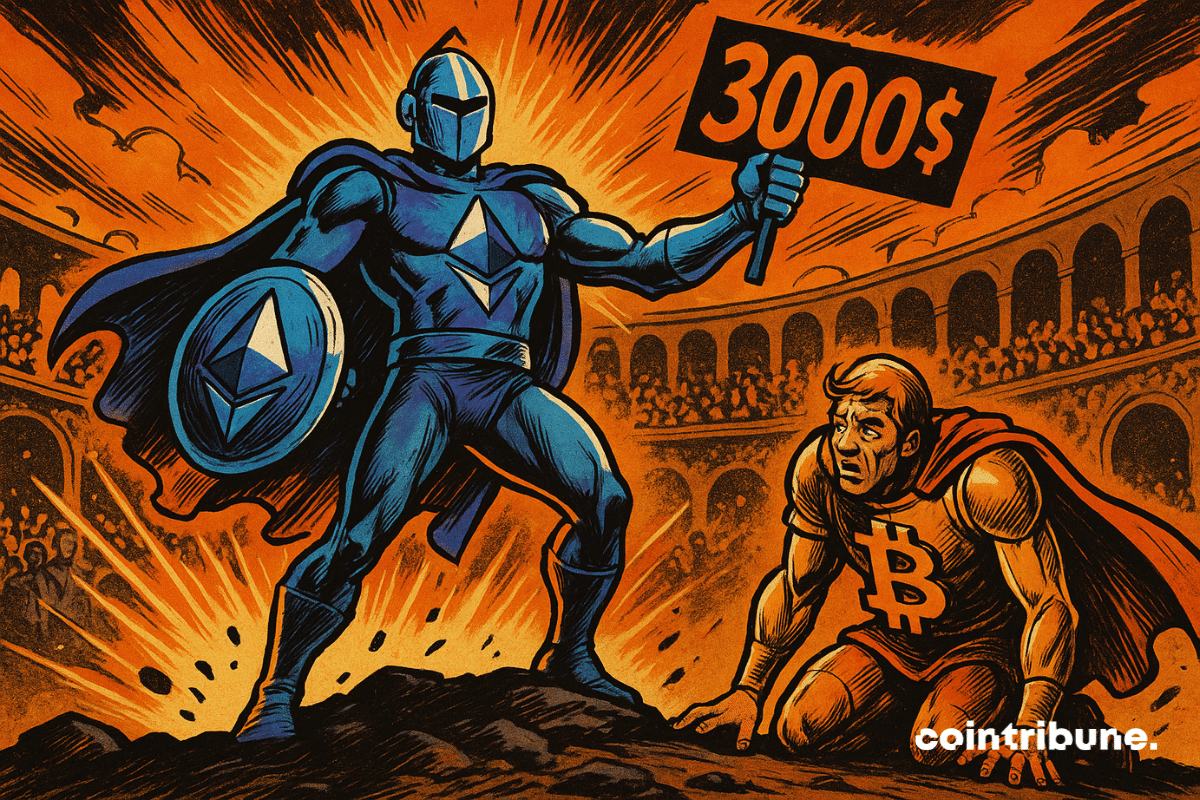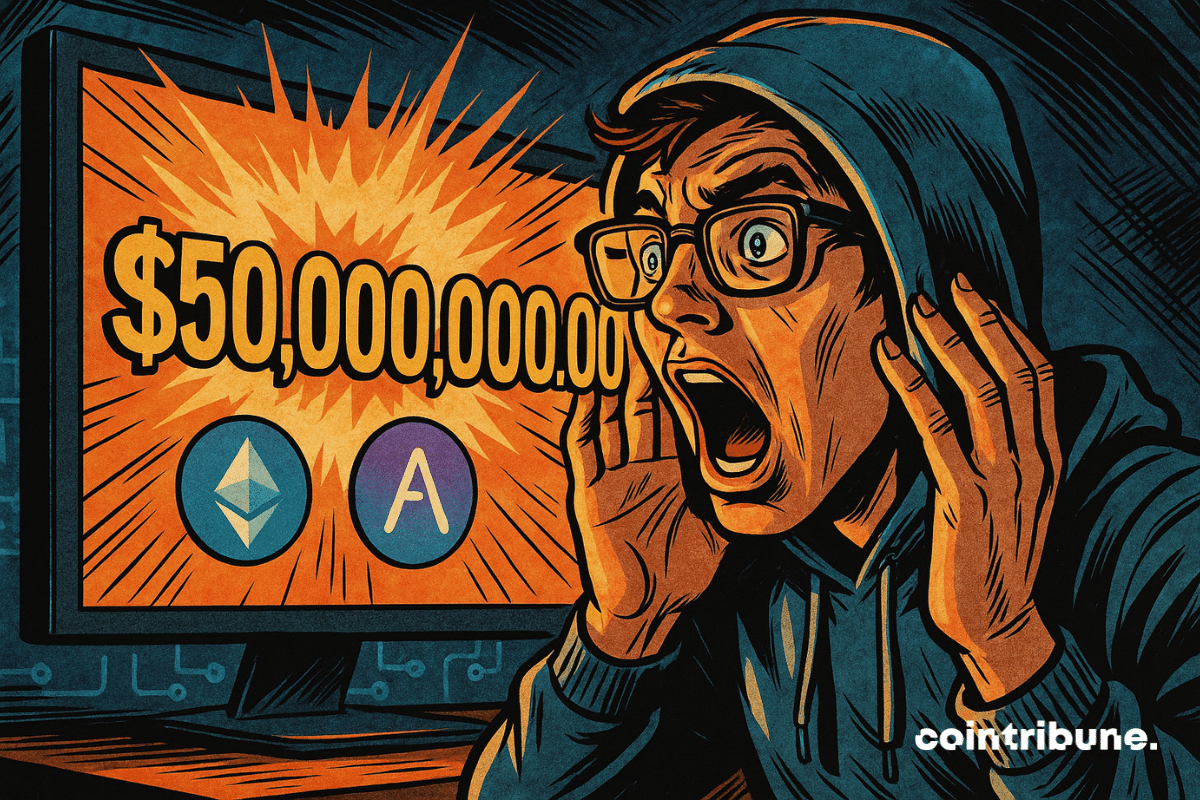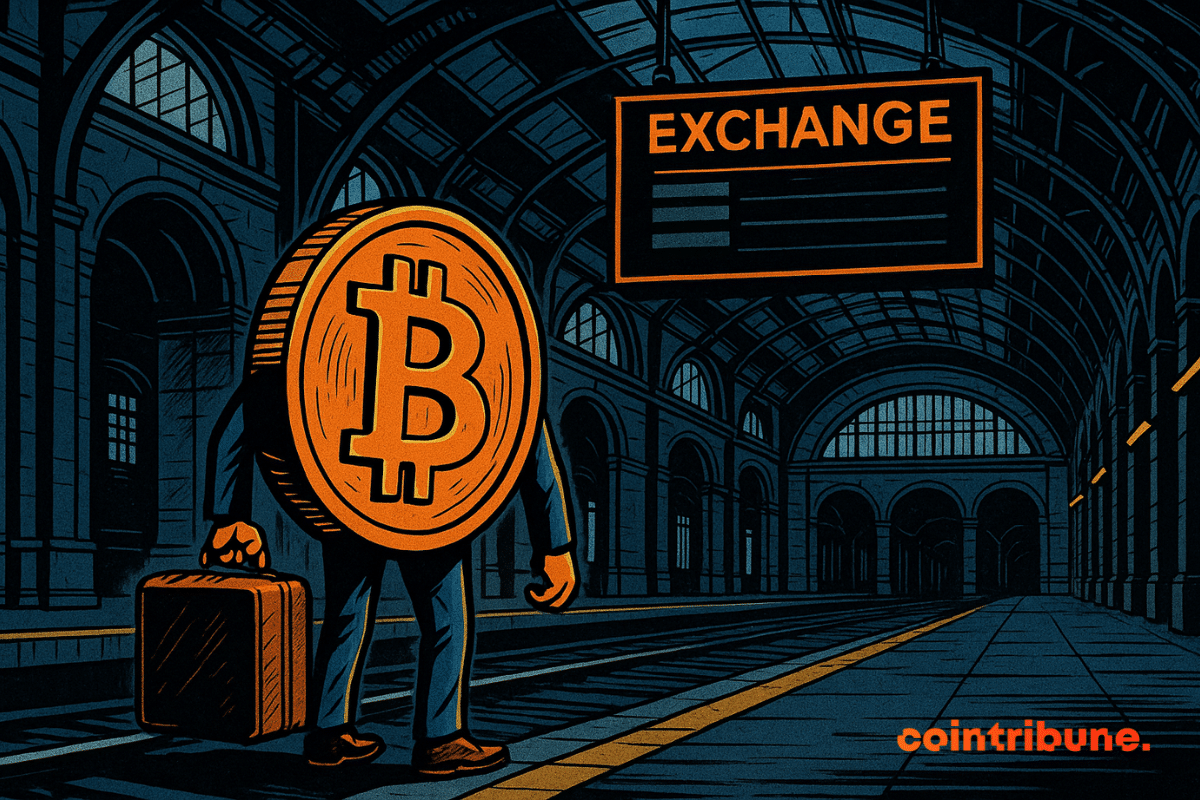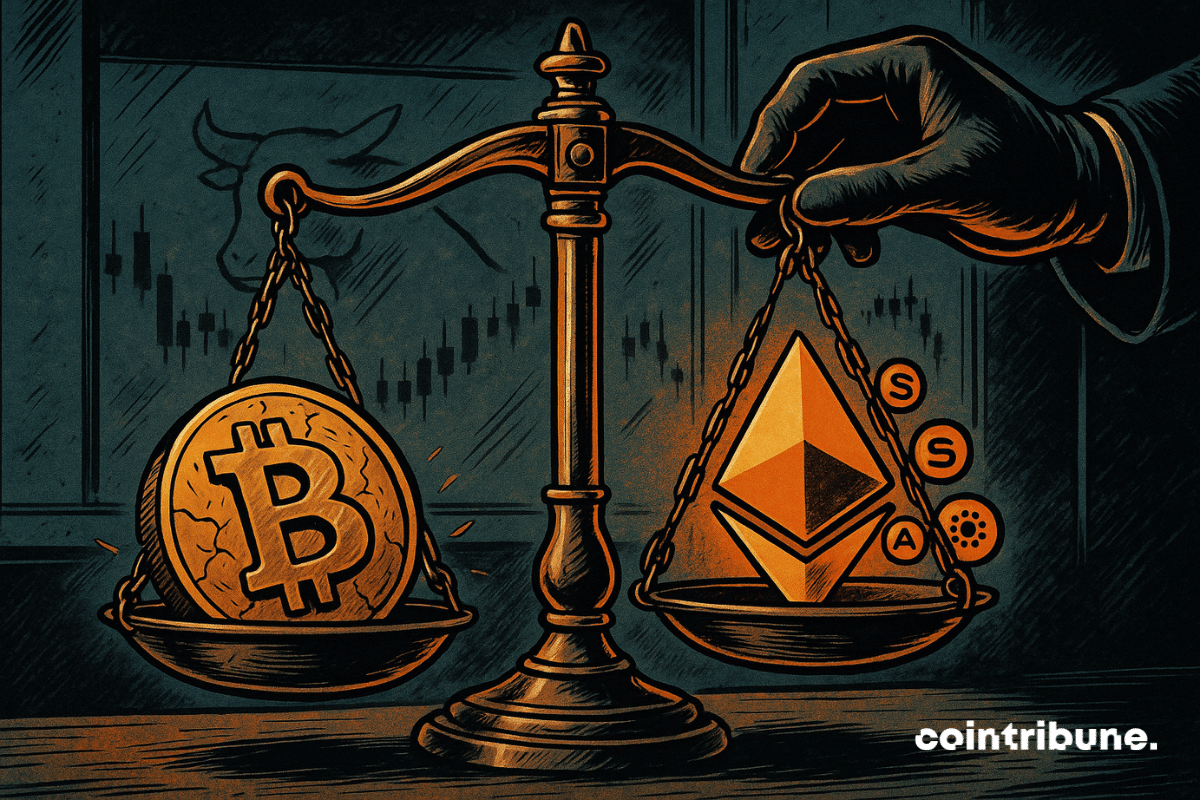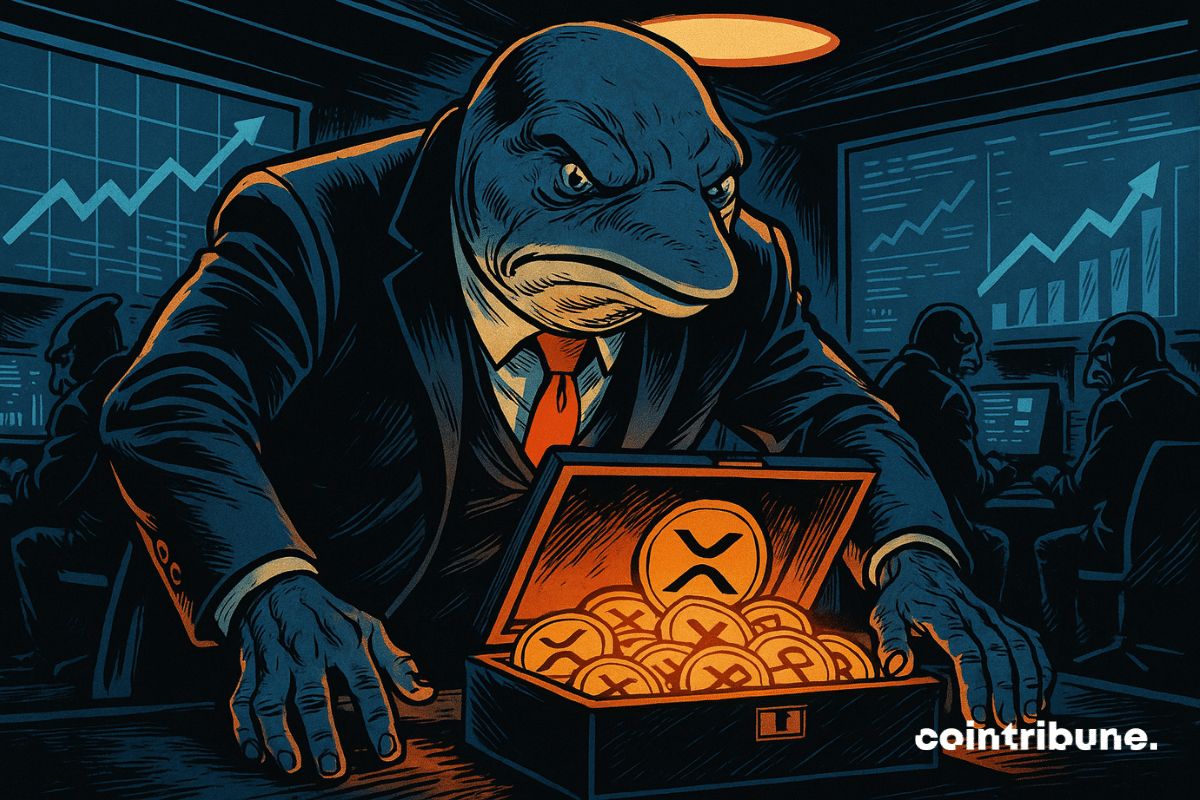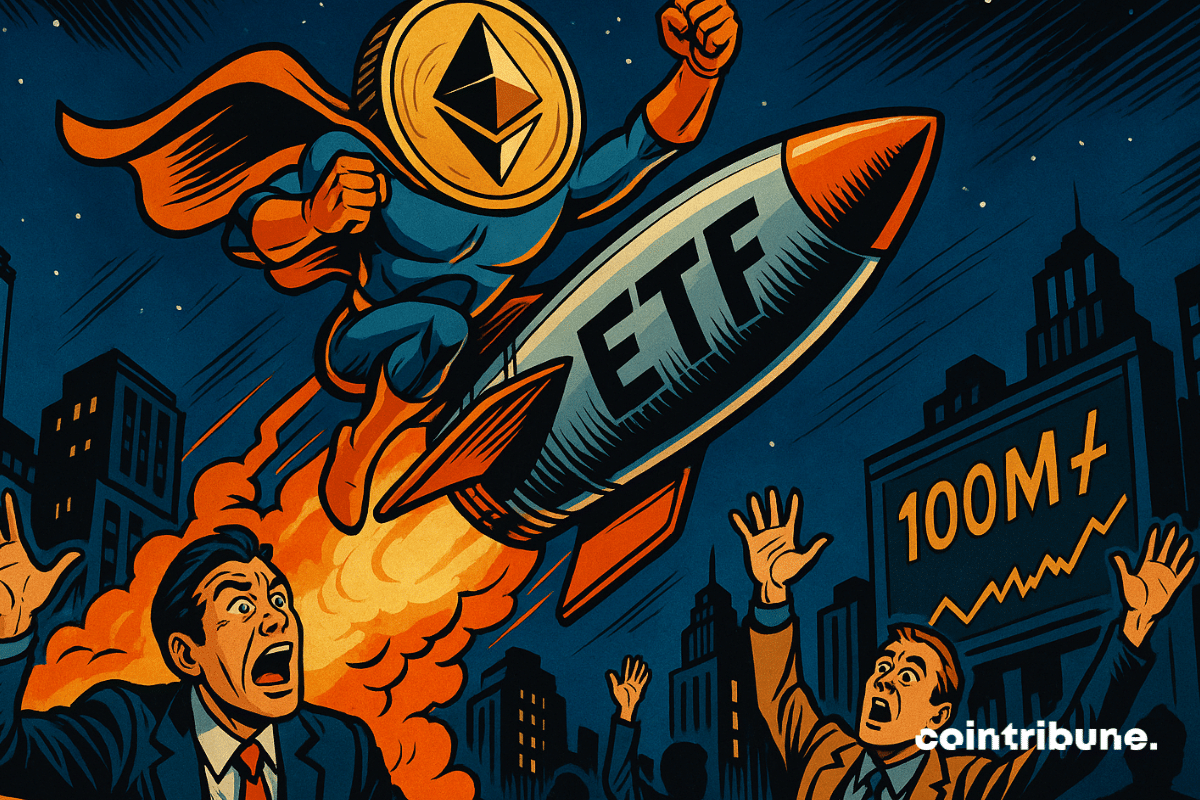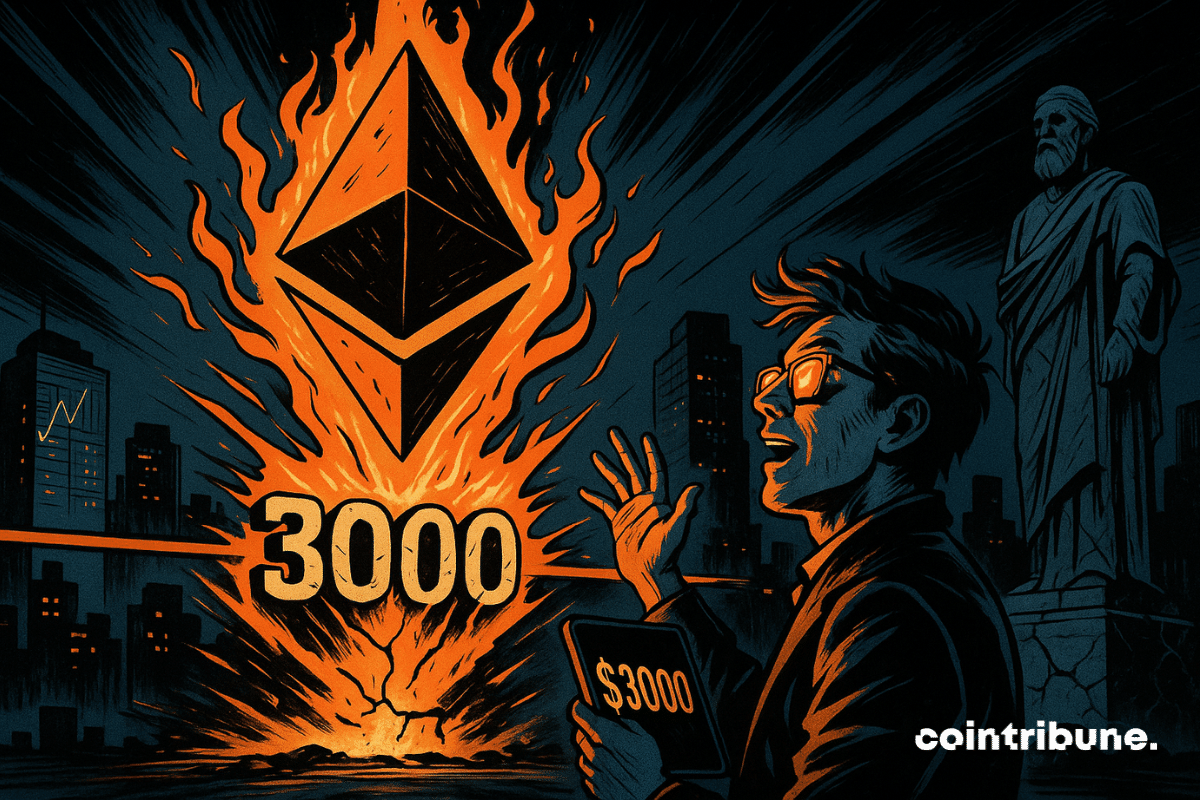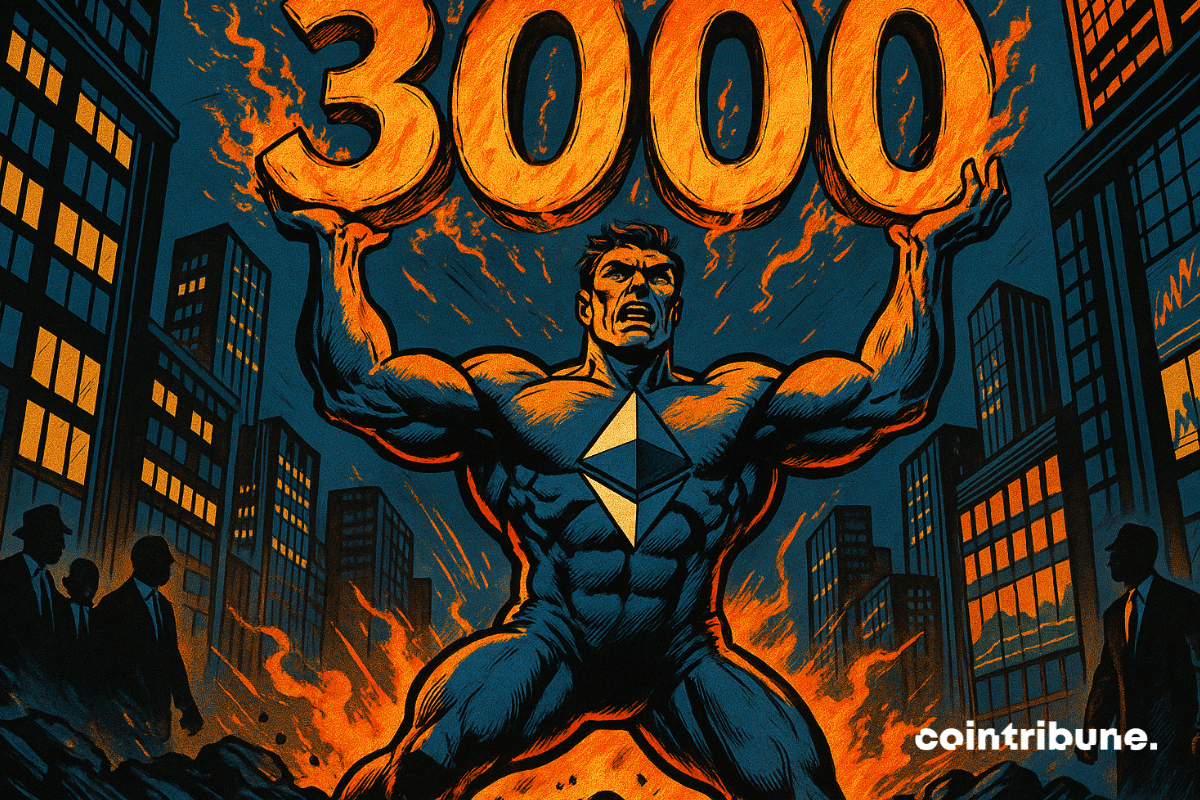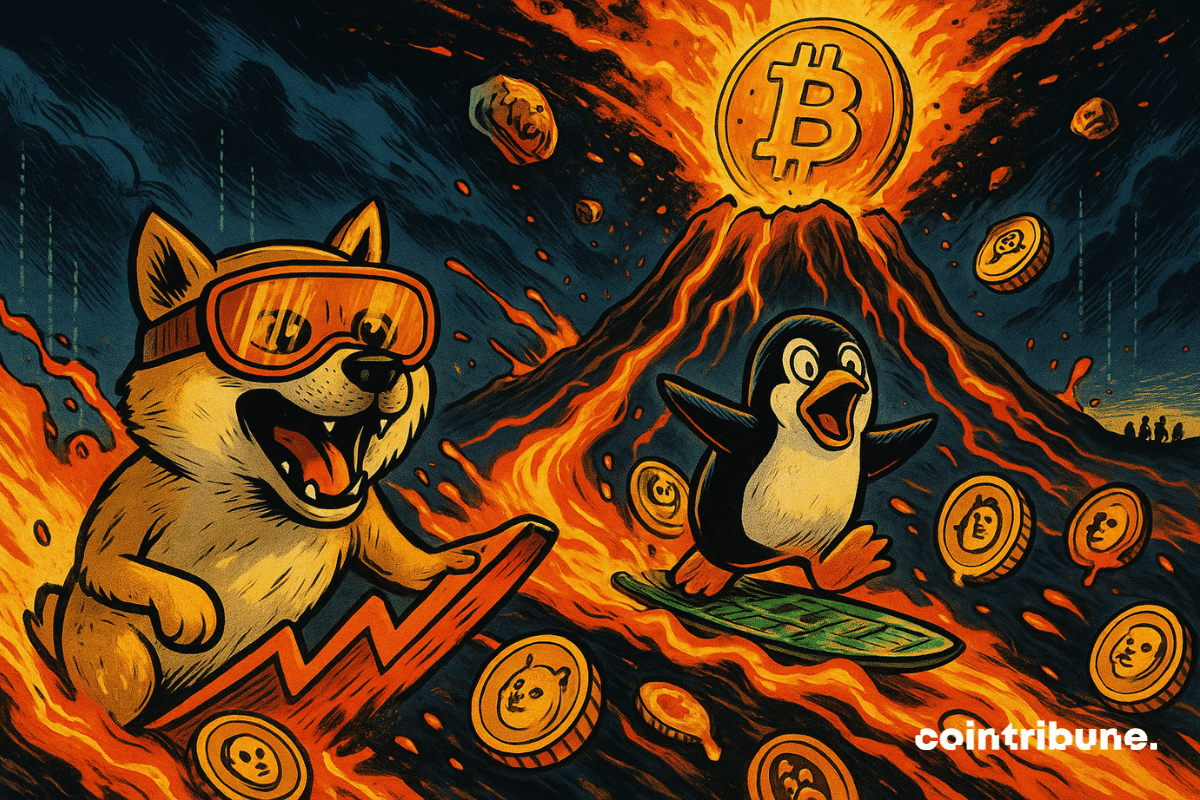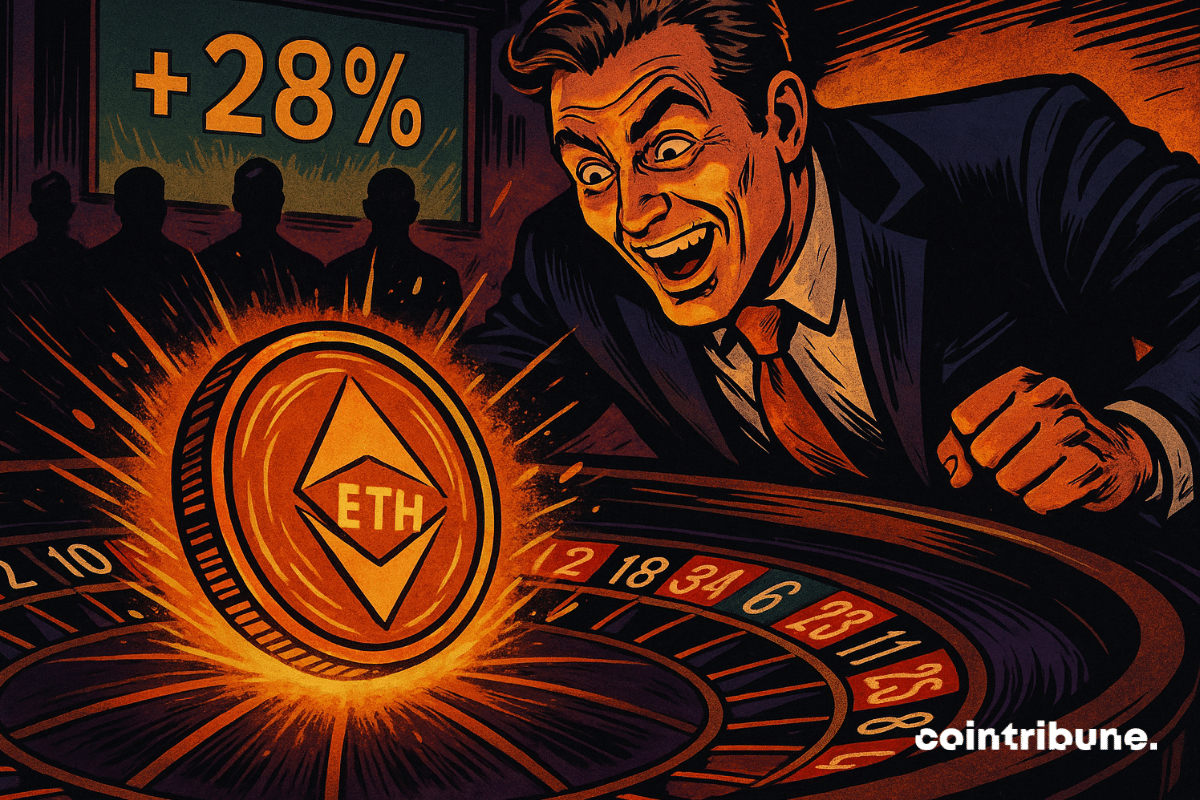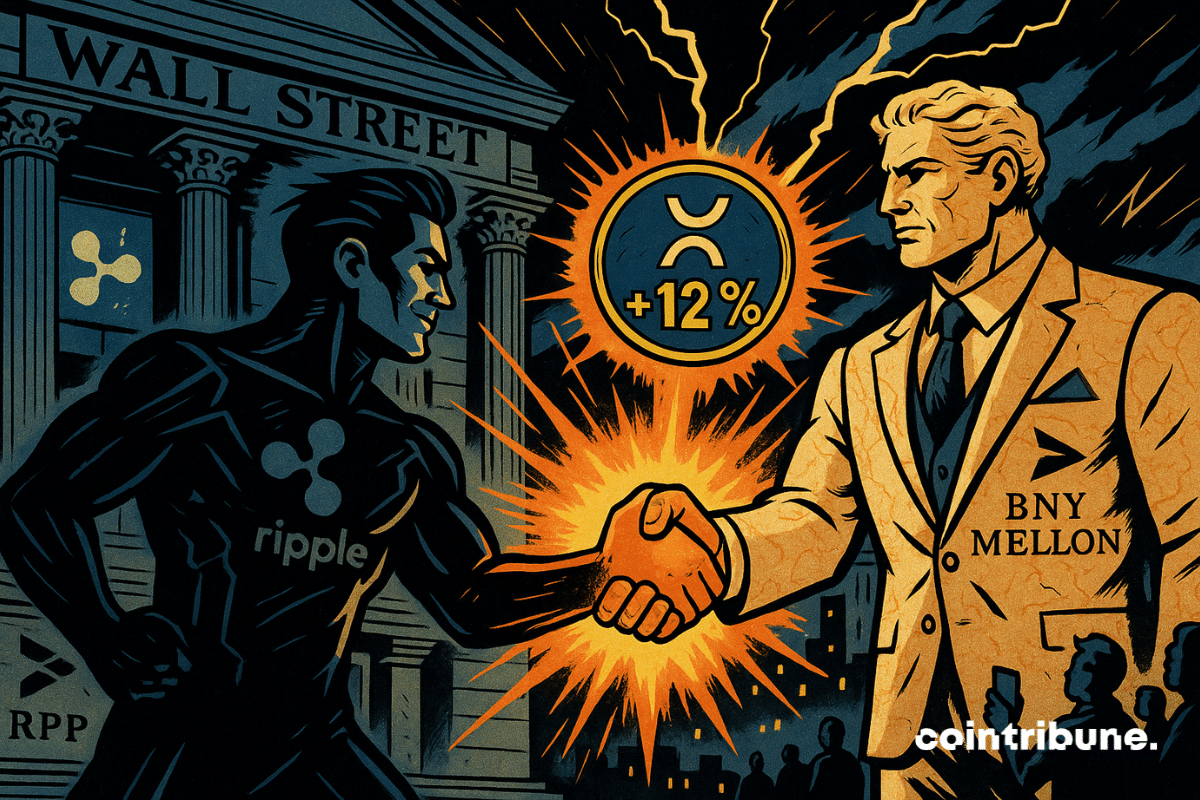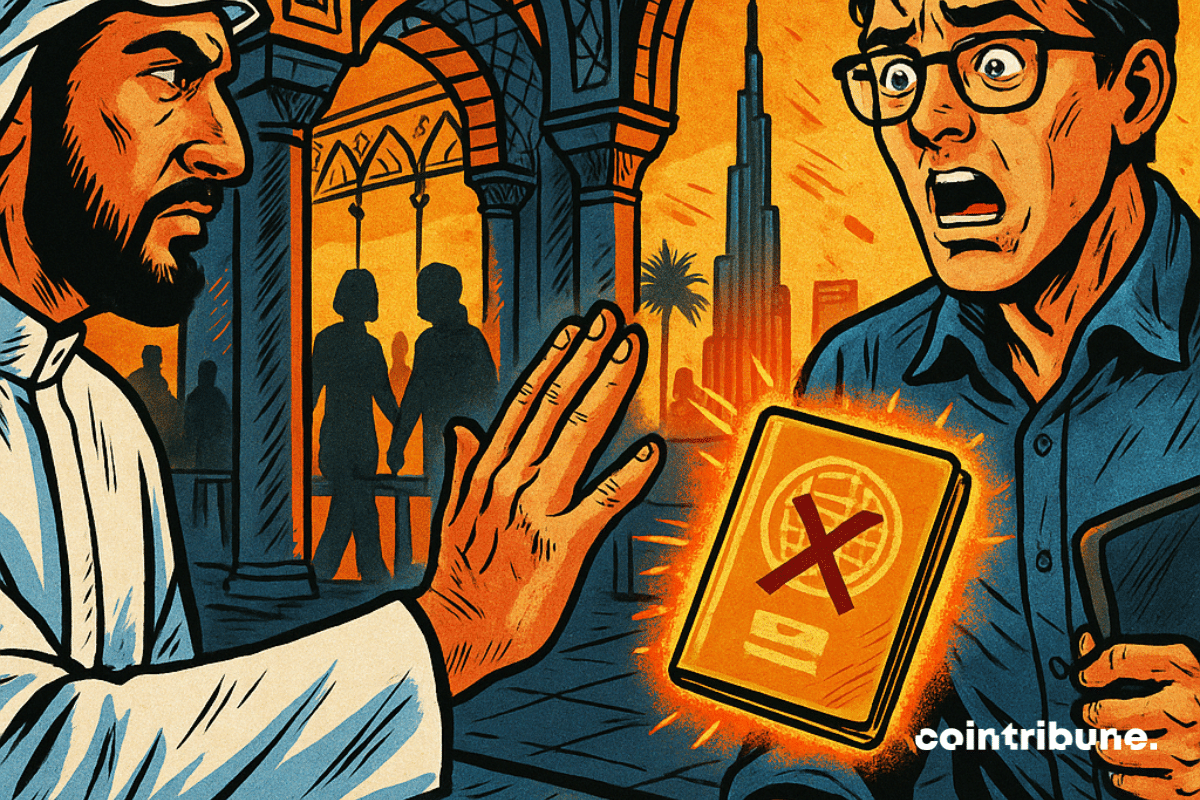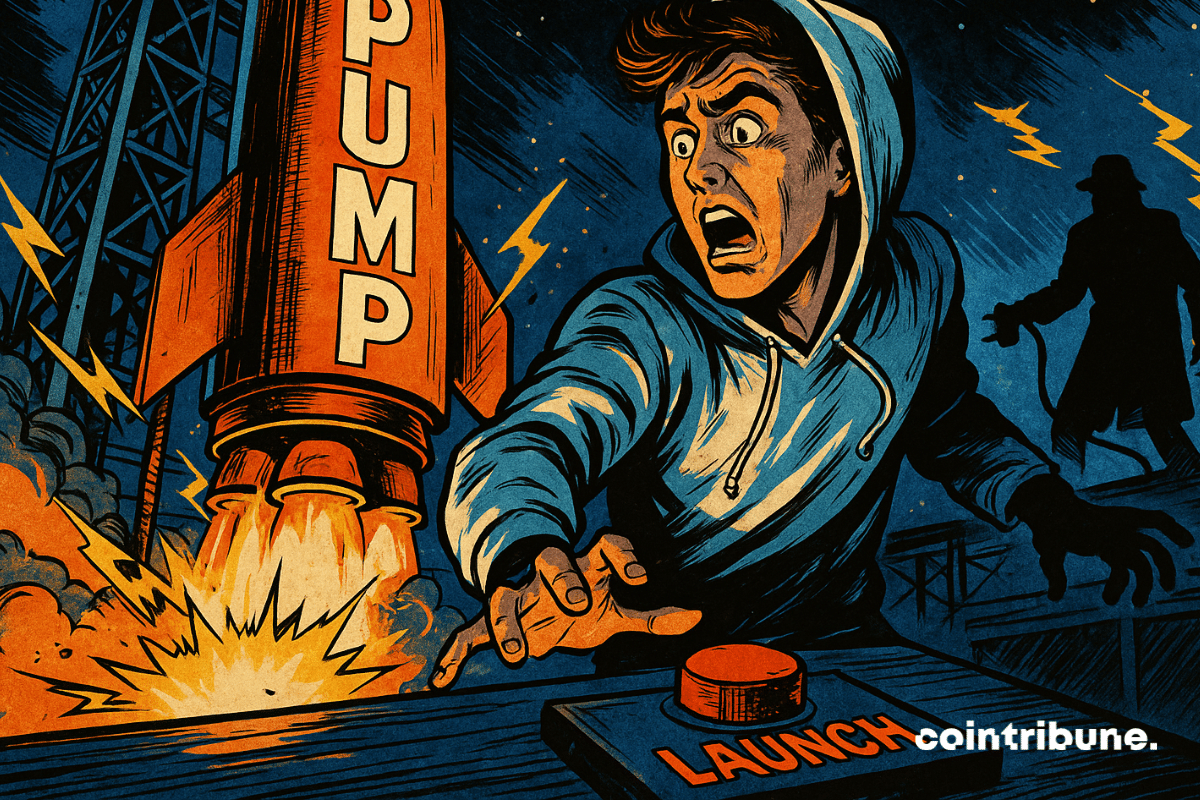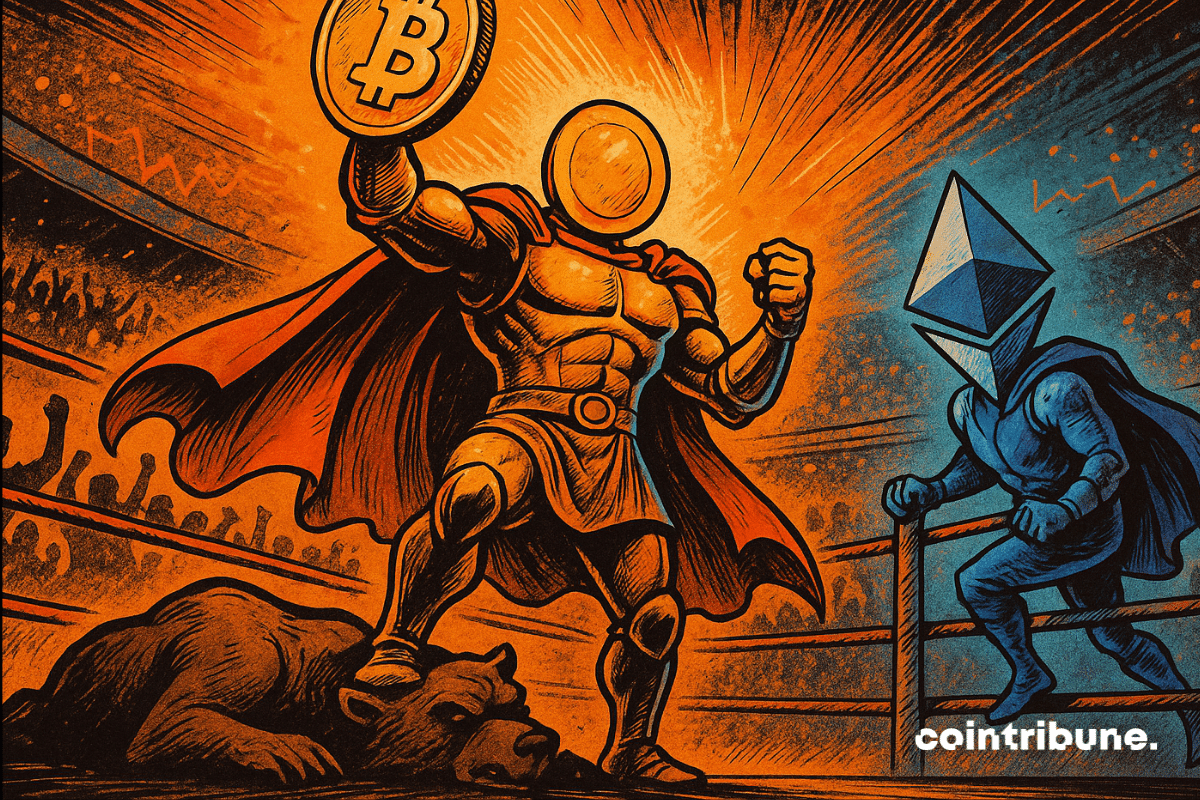While Ethereum is often touted as a potentially deflationary asset, the reality of the protocol tells a different story. Nearly 4.6 million ETH have been burned since 2021, the equivalent of $13.5 billion, yet this has not stymied the growth of supply. This anomaly raises questions about the coherence and effectiveness of the economic model established since the London upgrade, and challenges certain certainties regarding the programmed scarcity of the asset.
Theme Altcoins
For a long time, bitcoin reigned supreme as the uncontested master of the cryptocurrency realm, particularly in the area of exchange-traded funds (ETFs). But today, a turning point is taking place. Discreetly, methodically, Ethereum is beginning to nibble away at market shares and is capturing the attention of institutional investors. A recent report from CoinShares highlights this astonishing dynamic: ether is no longer just following; it is asserting itself. Behind the numbers lies a reality taking hold: the dominance of bitcoin in crypto ETFs is no longer so evident.
The decentralized finance giant Aave has just crossed a symbolic threshold by surpassing 50 billion dollars in net deposits. This historic achievement solidifies the protocol's position as the undisputed leader in DeFi lending. A major milestone that reflects both the maturity of the sector and its growing attractiveness to institutions.
Eric Jackson of EMJ Capital predicts Ethereum could surge to $10,000 soon and even $1.5 million long-term. He highlights the potential impact of staking-enabled ETFs, shrinking ETH supply, and growing institutional demand as key drivers behind this bullish outlook.
It feels like 2021 again. Cardano is one of the best performers among blue chip coins, and the 10th largest cryptocurrency by market cap has surged 29% in just seven days, reaching $0.747 at the time of writing. In the past 24 hours alone, it added nearly 4%, driven by a wave of bullish momentum across the altcoin market.
In an ecosystem dominated by major global platforms, it was a regional player that surprised the entire market. In just a few hours, XRP skyrocketed from $2.60 to $3.00, propelled by a massive influx of orders on Upbit, the leading South Korean exchange. While Binance and Coinbase usually control the weather, it is Seoul that, this time, took hold of the fate of one of the oldest altcoins in the market.
The crypto market loves surprises, especially when they have feathers. Pudgy Penguins (PENGU) is experiencing a spectacular rise after unexpected support from Justin Sun, founder of Tron. Could this memecoin follow the trajectory of a PEPE or even become the next institutional darling?
The crypto market, usually marked by spikes in volatility, displays a puzzling calm. While Bitcoin flirts with historical highs, flows to exchange platforms are collapsing. This unexpected restraint, highlighted by CryptoQuant, contrasts with previous bullish phases where euphoria triggered a wave of sales. A strong signal that raises questions about a profound shift in investor behavior and the structural solidity of the current cycle.
A Bullish wave is once again sweeping through all corners of the crypto market as Bitcoin reached new price levels and altcoins printed price climbs. Over the past week, the OG coin witnessed consecutive days of price increases, reaching an all-time high of $ 118,731 on July 11. Despite this remarkable feat, data shows that the apex coin’s dominance has faded slightly. Prominent market personality Matthew Hyland even asserted that altcoins may have a greater upside, as many currently surge independent of Bitcoin’s influence.
Dogecoin put derivatives markets under pressure in record time. In four hours, long-position traders saw more than $590,000 go up in smoke, trapped by a 1,000% liquidation imbalance. The asset, fueled by a meteoric rebound before dropping again, exposed the ambient nervousness and vulnerability of speculative positions. This sequence illustrates how unpredictable Dogecoin remains, even for the most seasoned operators.
In the crypto universe, the activity of whales often serves as a barometer for trend reversals. XRP, buoyed by a record influx of wallets holding more than one million tokens, has just provided a striking illustration. While its price leaps by 26% in a week, the concentration of tokens in a few hands raises questions about the intentions of large holders. Against the backdrop of a widespread altcoin rally, this renewed interest in Ripple's crypto could well mark a strategic turning point for the market.
With the institutional crypto community increasingly focused on token efficiency, reports indicate that Shiba Inu has seen its burn rate surge by more than 10,700% in recent days. This sets the stage for an even larger single-day burn event.
BlackRock’s iShares Ethereum ETF led a major surge in ETH fund inflows this week, signalling rising institutional demand.
The discreet transfer of 10,000 ETH by the Ethereum Foundation to SharpLink Gaming, at a price below market value, raises eyebrows. This private deal, concluded before a spike in the price above $3,000, raises questions about the strategic management of Ethereum's reserves. In a context of record inflows into Ether ETFs, this operation may signify a turning point: ether is no longer a speculative asset; it is becoming a financial lever integrated into the treasuries of influential companies.
Ethereum has climbed back to $3,000, driven by rising institutional purchases and increased futures market activity, signaling renewed bullish momentum.
As Bitcoin sets a new record, an unexpected segment of the crypto universe reasserts itself: memecoins. Once regarded as mere speculative curiosities, they now attract massive trading volumes and unprecedented media attention. Digital irony becomes the engine of the market, sometimes eclipsing so-called serious projects.
The crypto market is entering an important phase, with Shiba Inu, Ethereum, and Dogecoin all showing serious volatility. Traders are closely watching these coins as technical patterns hint at potentially explosive price moves, if the right conditions line up.
SharpLink is making bold moves with Ethereum—growing its holdings, staking all assets, and drawing investor attention as ETH gains momentum.
According to data from Token Terminal, over $6 billion worth of tokenized assets now live on the Ethereum blockchain. That’s not theoretical DeFi liquidity, but real-world funds, from some powerful names in global finance.
As market attention swings between innovations and institutional strategies, XRP has made a significant move this week with a 12% increase. This surge is not insignificant, as Ripple has just appointed BNY Mellon, a cornerstone of American finance, as the custodian of its stablecoin RLUSD. In an environment where institutional adoption of cryptocurrencies is intensifying, this strategic alliance could redefine XRP's role in the crypto economy and strengthen its position against giants like Ethereum.
Stablecoin reserves on Binance hit a record of $31 billion. An "explosion of pending liquidity" according to analysts, which could reignite the flame of altcoins. Is the much-anticipated alt season finally ready to begin?
As Bitcoin gallops ahead, altcoins are sharpening their weapons in the shadows... What if the king soon fell from his throne? Guaranteed suspense in the crypto arena.
While the media spotlight remains on Bitcoin ETFs and the fluctuations of Solana, a quiet yet massive concentration is occurring on Ethereum. Wallets holding more than 10,000 ETH, the famous mega-whales, are increasing their positions at an unmatched pace since 2022. Barely visible, this surge in accumulation hints at the beginnings of a bullish cycle.
Solana launchpad Pump.fun has taken center stage in the memecoin discourse after LetsBonk, a new market entrant, surpassed the OG memecoin platform in token creation on Sunday. With this remarkable run, LetsBonk has become the first-ever Solana launchpad to outpace Pump.fun in daily tokens launched.
When the crypto world dreams of physical anchoring, it sometimes gives birth to projects that are as bold as they are vague. The latest? An initiative from the TON Foundation aimed at offering a 10-year Golden Visa to Toncoin investors. The idea, appealing on paper, was quickly dampened by a blunt denial: the authorities of the United Arab Emirates never approved the program. Behind the announcement effect lies the ongoing tension between decentralized innovation and state sovereignty.
As the world of cryptocurrencies becomes increasingly closed and competitive, Vitalik Buterin is sounding the alarm. The creator of Ethereum is now advocating for "copyleft," a license requiring those who reuse open source code to publish their improvements. This turnaround aims to counter the private appropriation of collective knowledge and to preserve the ideal of collaboration that has strengthened Web3.
Pump.fun’s token launch plans face uncertainty after Gate quietly removed its PUMP sale notice. The move comes as the platform sees reduced engagement and questions grow around its next steps.
Investor confidence stays strong as crypto ETPs see $1.04B in inflows, with Bitcoin leading and Ethereum gaining traction.
Limiters to better protect. Vitalik Buterin, the brain behind Ethereum, wants to impose a gas limit per transaction. A decision that surprises in an ecosystem accustomed to constant expansion. But behind this technical constraint lies a clear intention: to make Ethereum more stable, safer, and finally ready for the future.
After a promising start to June, Chainlink’s price momentum has slowed significantly. It's to break past the $15 resistance level. Despite a short rally that brought it from $13 to nearly $16, the token has pulled back sharply, dipping as low as $11.20 before recovering slightly.

